Based on reading Viable Maths by Peter Mattock.
When I do equivalent fractions but I rarely do it with the aid of a diagram or a frame like I have here.
I haven’t extended this to algebra, but I imagine it would not be difficult to do so.
Based on reading Viable Maths by Peter Mattock.
When I do equivalent fractions but I rarely do it with the aid of a diagram or a frame like I have here.
I haven’t extended this to algebra, but I imagine it would not be difficult to do so.
Completing index law week here.
I added some whiteboard questions/rapid fire questions as I felt I didn’t have enough build up.
As in the last few PowerPoints I spent time thinking about the questions I ask and the skills required.
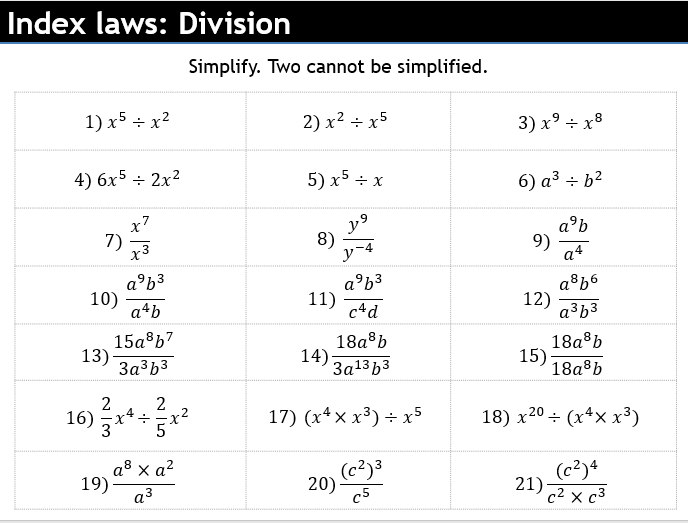
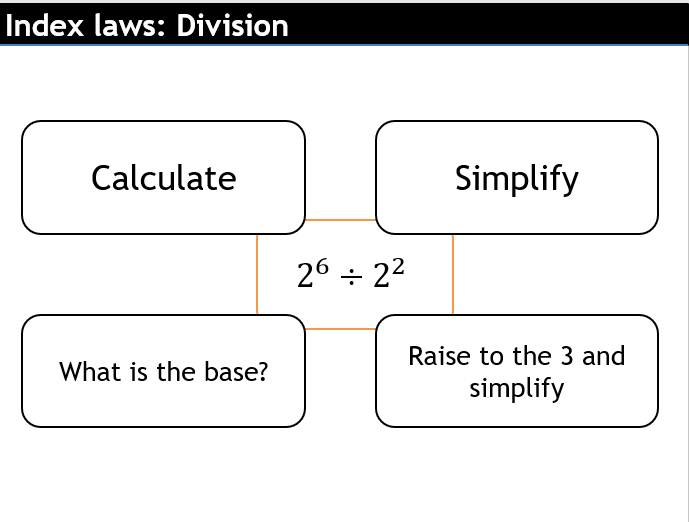
An SSDD type question. I need to add more of these to my teaching.
PS: No update on Monday, it’s a public holiday here in Thailand. See you on Wednesday.
Get the lesson PowerPoint here.
Going with Jo Morgan’s suggestion of doing the power law after multiplying rather than after dividing.
I wrote some challenging questions.
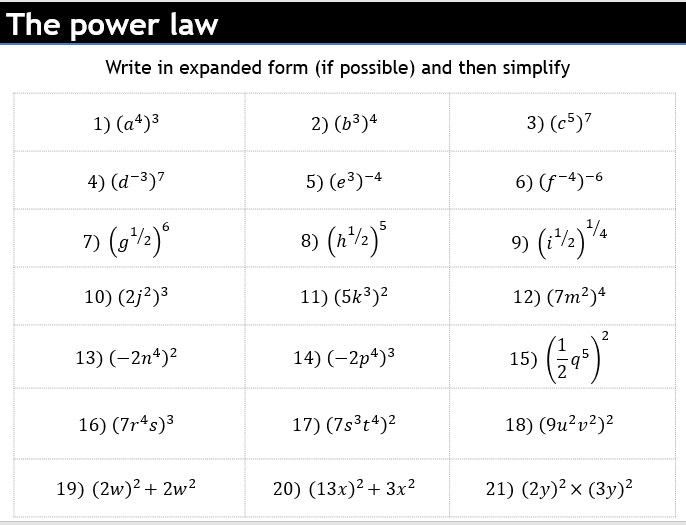
There’s also a hinge question and some timed questions.
I also moved on to changing bases. Because it’s really easy and a lovely way to introduce the idea of square rooting and powers of one half.
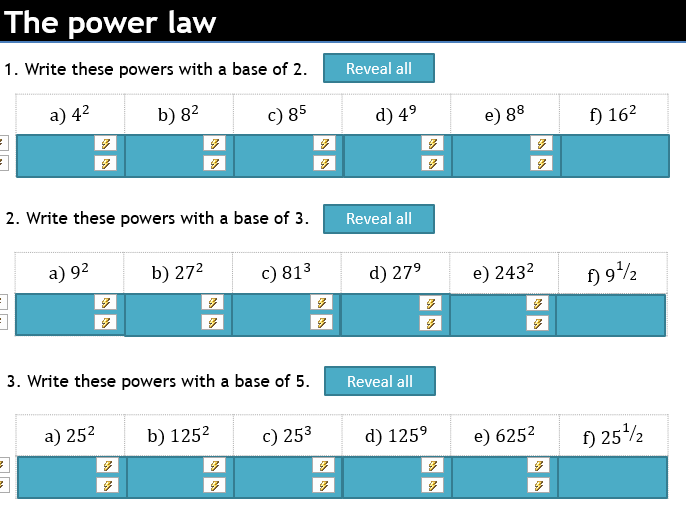
Again, a lot of stuff is stolen from Jo Morgan’s great work. I mean, I’m never going to make something as beautiful as this.
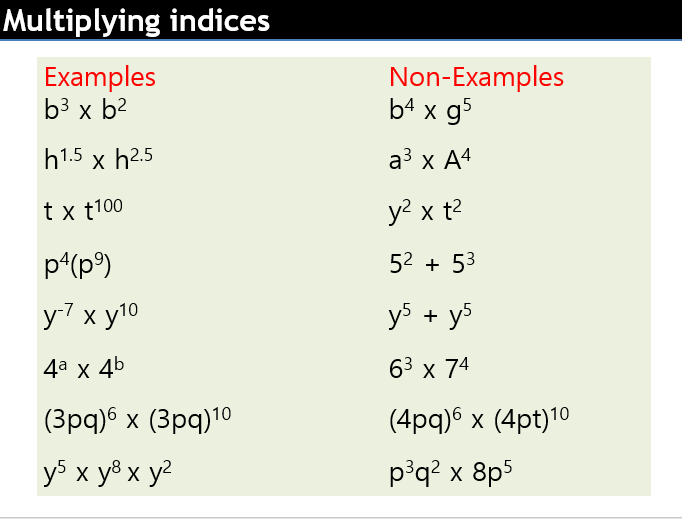

I wrote some questions. I think they’re quite nice.
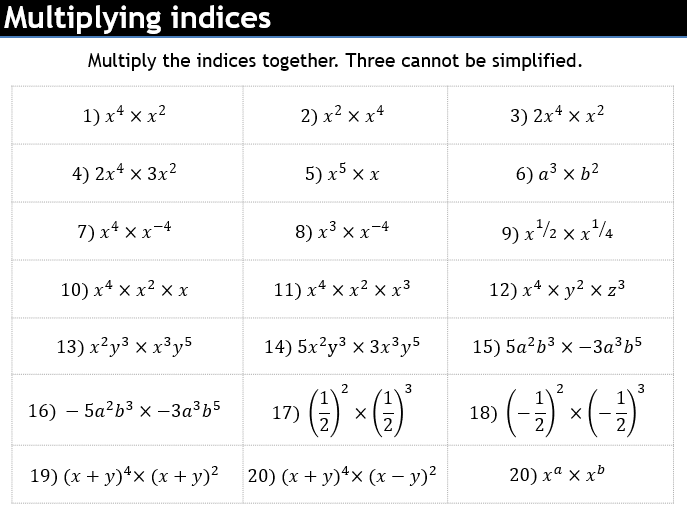
And I put some discussion slides in again
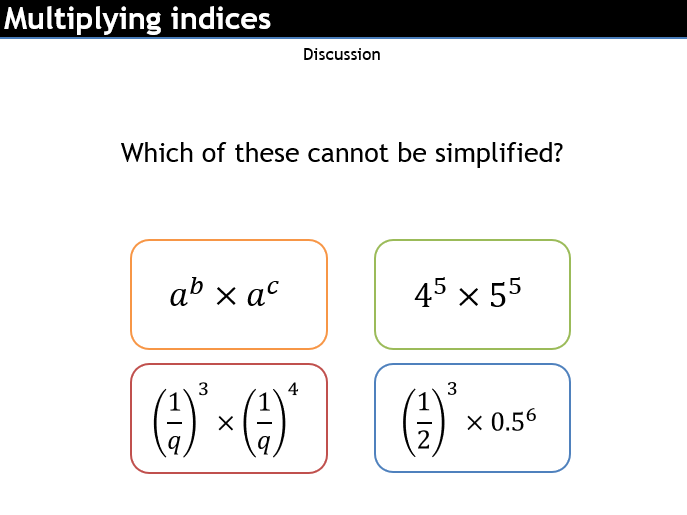
So … I can’t claim that I’ve done much original work here.
Most of this is stolen from Jo Morgan’s indices in depth presentation. Sorry Jo!
Normally I make a lot of stuff from scratch, but Jo’s work here is so good that I can’t really improve on it. If you get to see Jo do an ‘in depth’ presentation, go. The time and effort behind them is phenomenal.
PowerPoint contains a section on writing things in index and expanded form.

As well as some questions people might find a bit old fashioned. Also the first time I’ve put a ‘reveal all’ button on a page. Can’t believe I’ve not thought to do that before.


I like these little discussion slides. I think they’re fun.

Some UKMT questions, which I stole from this book. It’s a lovely little book.
I also added a little problem solvey bit where we talk about powers of two and binary.
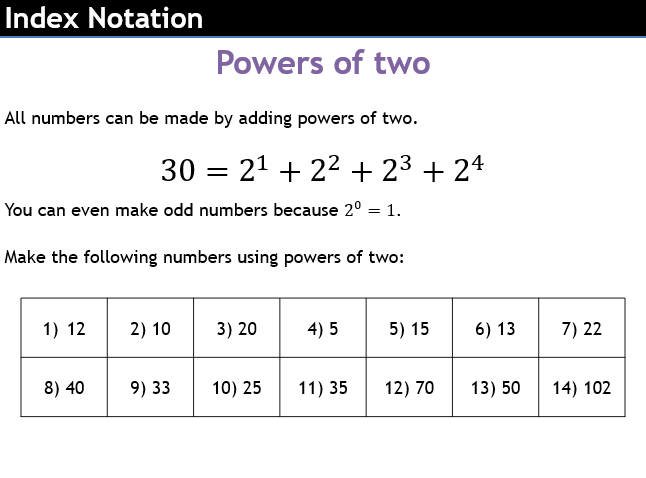
Multiplying to come next (it’s basically copied and pasted from Jo again. Sorry Jo!)
I find telling pupils the Pythagoras rules and then getting them to solve ‘problems’ isn’t enough. Often, the unstructured problem solving can be overwhelming for students.
Opinions vary. You might think that I’ve structured this waaay too much, and removed too much thinking from the students.
It would be interesting to hear people’s point of view on this.
Starts with a ‘do Pythagoras but with a little context’ and leads into a question that’s a little more unstructured.
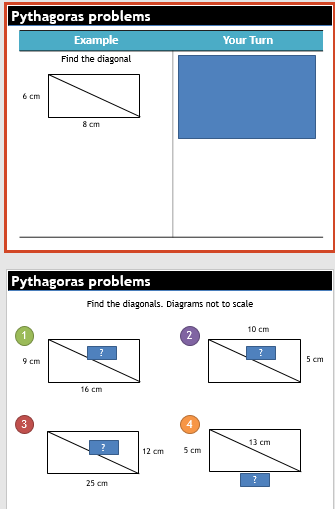

Moves onto using Pythagoras to find the area of a triangle.
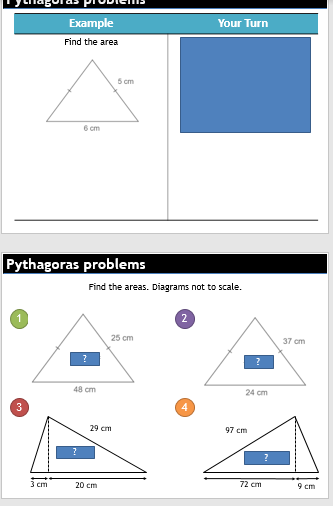
Maybe I’m over explaining things, but in the past I have not made enough things explicit and I’ve just assumed my students will work it out. I think I’d rather be more explicit.
Next, we pick from a complex diagram.
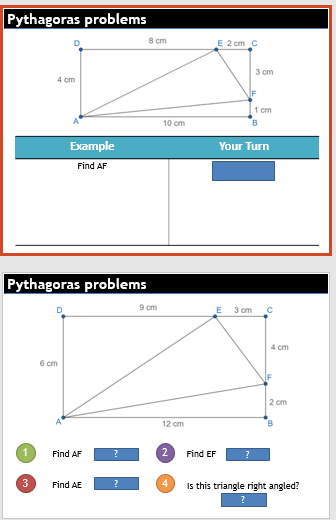
Now points. Which I don’t actually think is too complicated.
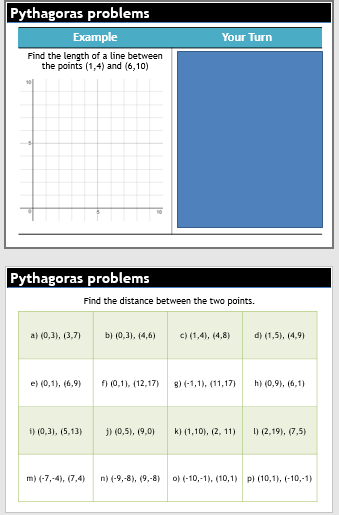
I’d love for people to feedback on this lesson. Is there too much spoon feeding going on here? How can I reduce the spoon feeding whilst also making skills explicit?
Download the worksheets here [1] [2]
There’s two lessons here.
Which is the hypotenuse?
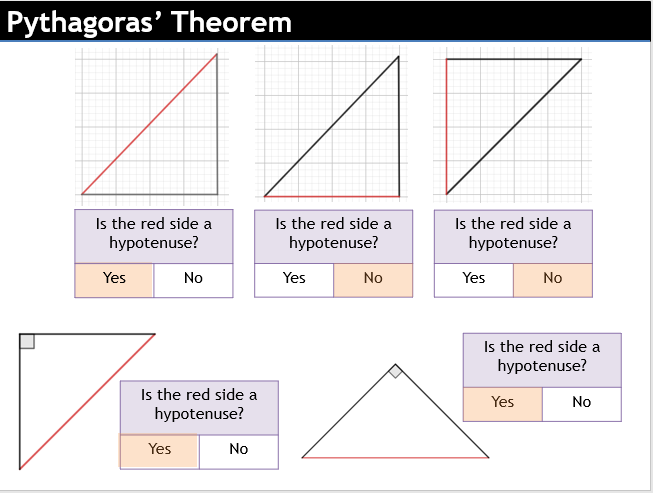
A worksheet with lots of different orientations of triangles.
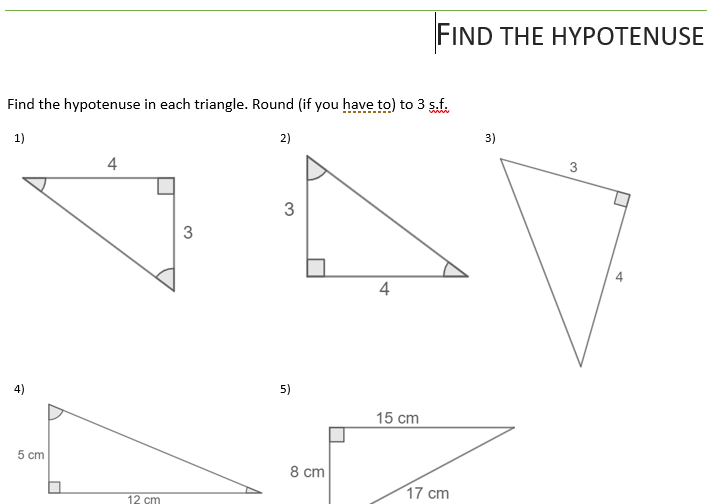
Moving on to finding the missing side, no matter if it’s long or short.
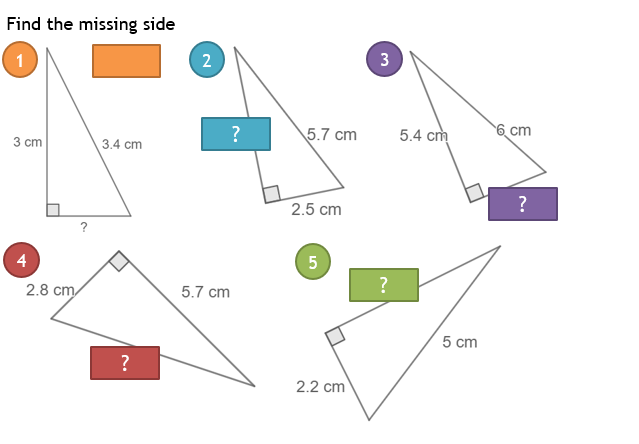
Something a bit more fun
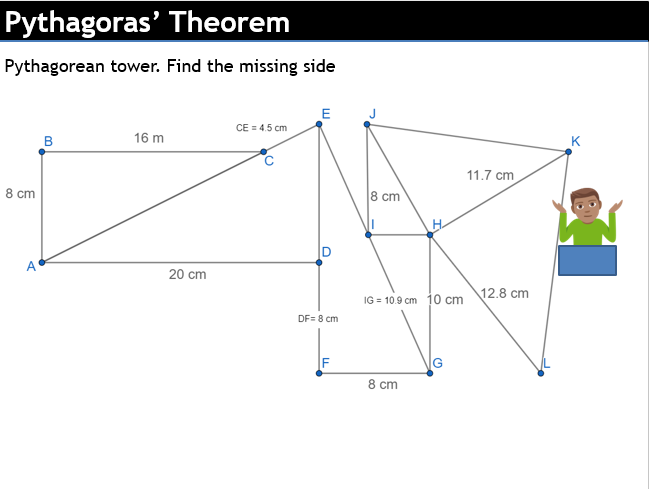
Finishes, as always, with a five quick questions learning check.
Just a load of interesting (ish) ratio problems to work though.
I used bar modelling. I am increasingly into bar modelling for KS3, although I’m still not massively convinced when it comes to negatives.
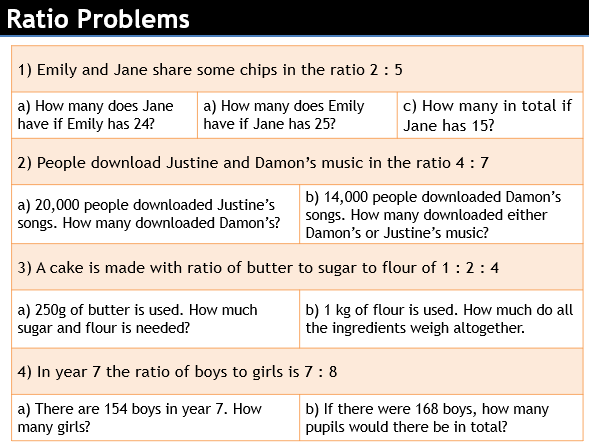
I call these ‘reverse’ ratio problems. I don’t know if that’s the correct terminology.
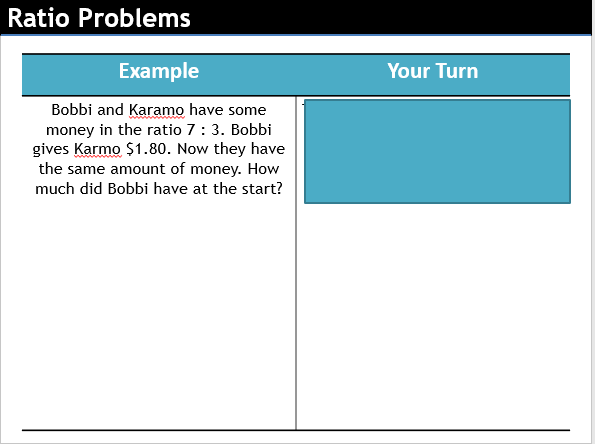
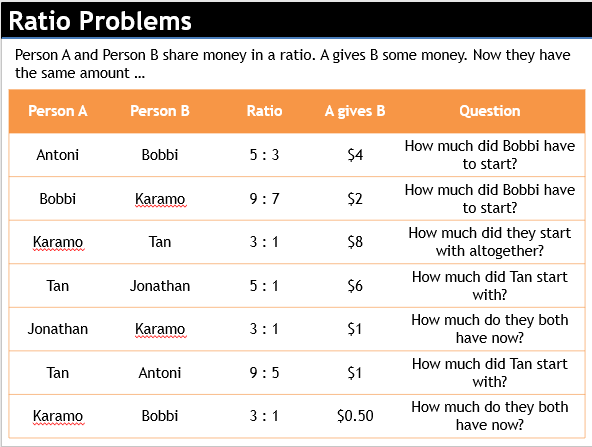
I have been watching a lot of Queer Eye recently.

I like bar modelling for questions like this.
Also
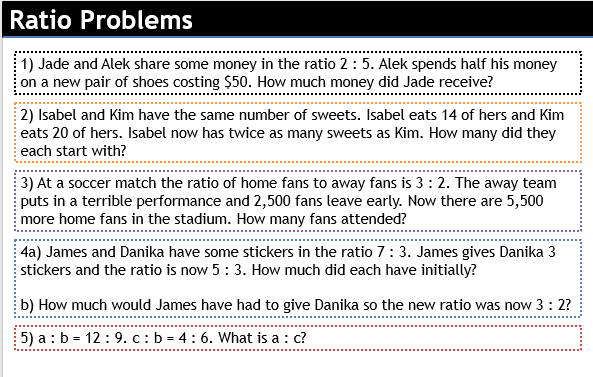
Some questions adapted from Don Steward and White Rose Maths Hub’s Barvember 2017.
No posts for two weeks now. I’m on holiday. When I get back, Pythagoras and Trig!
Something I’ve wanted to get around to completing for a while. I love ratio and I’ve got into doing a little bit of bar modelling. There’s some LOVELY questions in the White Rose Barvember stuff.
This lesson has an example problem pair and some mini-whiteboard work. When I taught this lesson, the mini-whiteboard stuff really, really worked on getting students on the same page and up to speed.
I put quite a lot of thought into this set of questions, too.
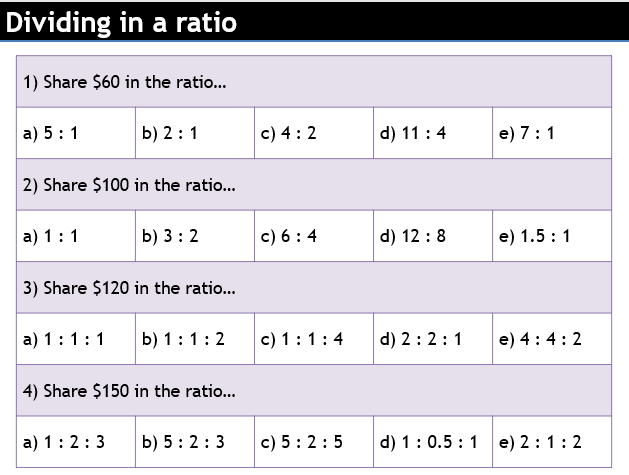
I think I’ve done a good job with question 2 in particular, there.
Also there’s some worded questions.
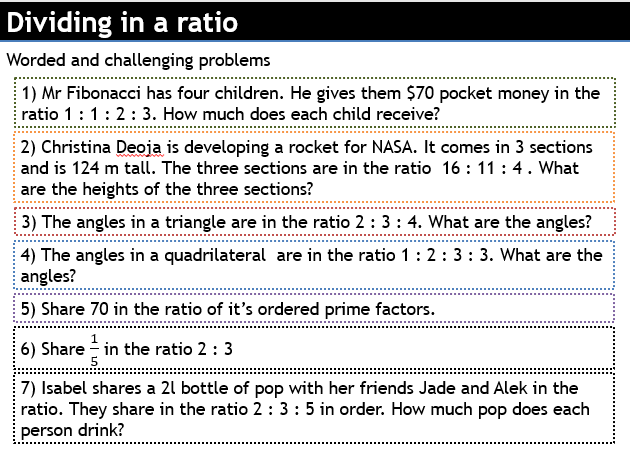
Question 5 might be my favorite question of all the questions I have ever written. There’s just something lovely and crunchy about it.
Obviously this lesson includes the plenary check as well and also a problem solving question.
Friday’s resource is the last one for a while. It’s the Easter break. If I’m writing maths on a beach in Laos, my wife will murder me. On a personal note, I’ve managed to have a blog ready every Monday, Wednesday and Friday this half term. Pat on the back for me, there. I hope to have the same schedule next term.
On an episode of Queer Eye, a family of 3 was about to become a family of 4.
